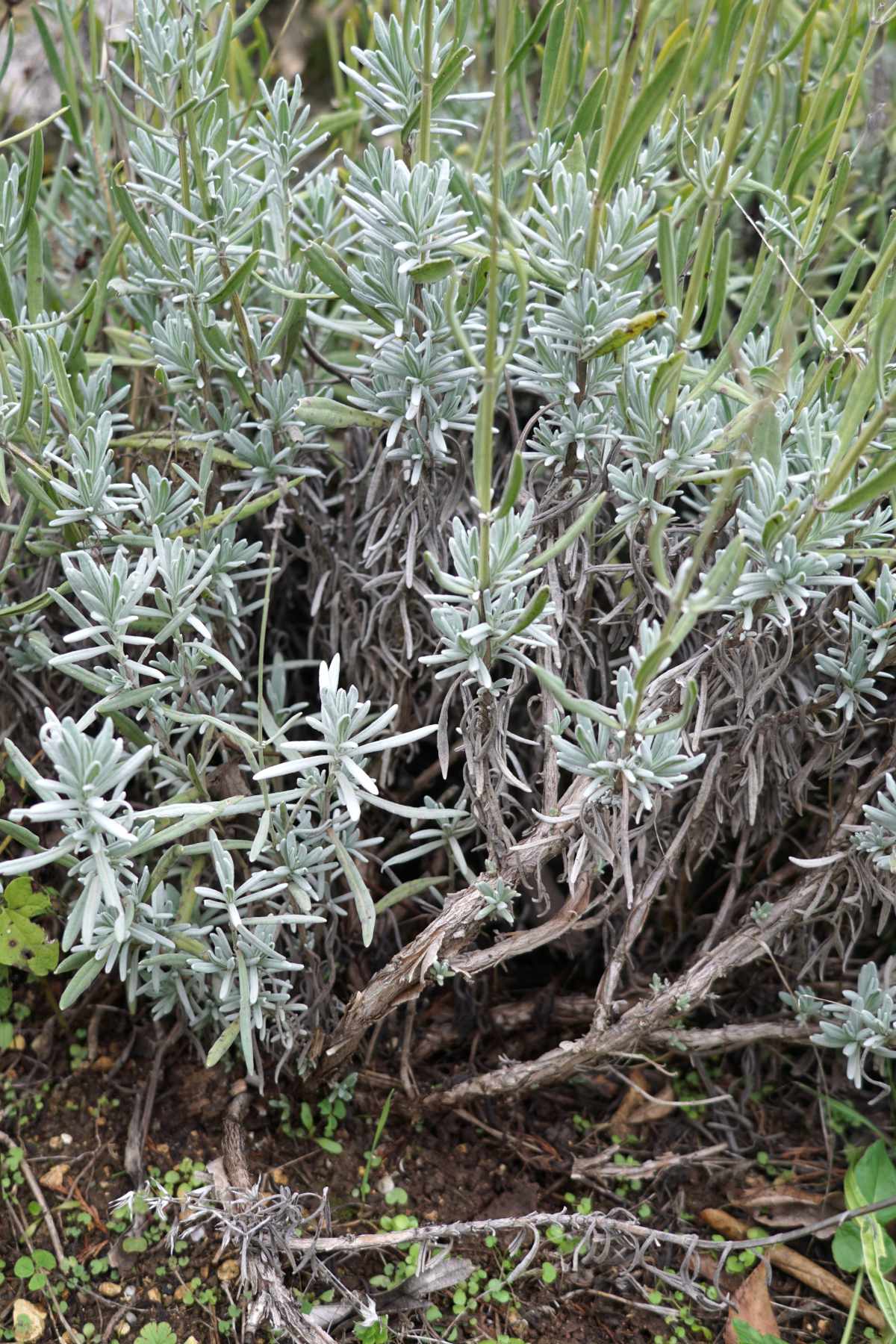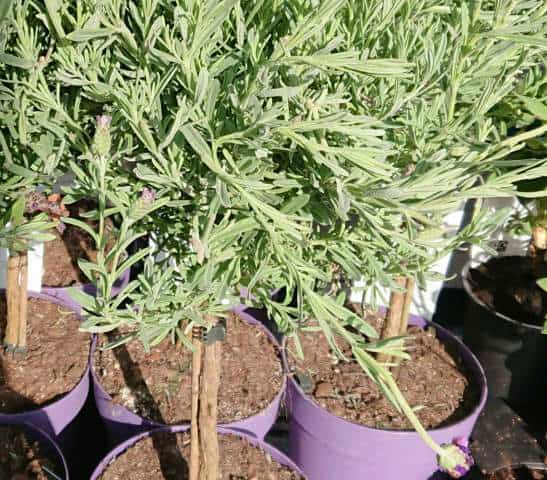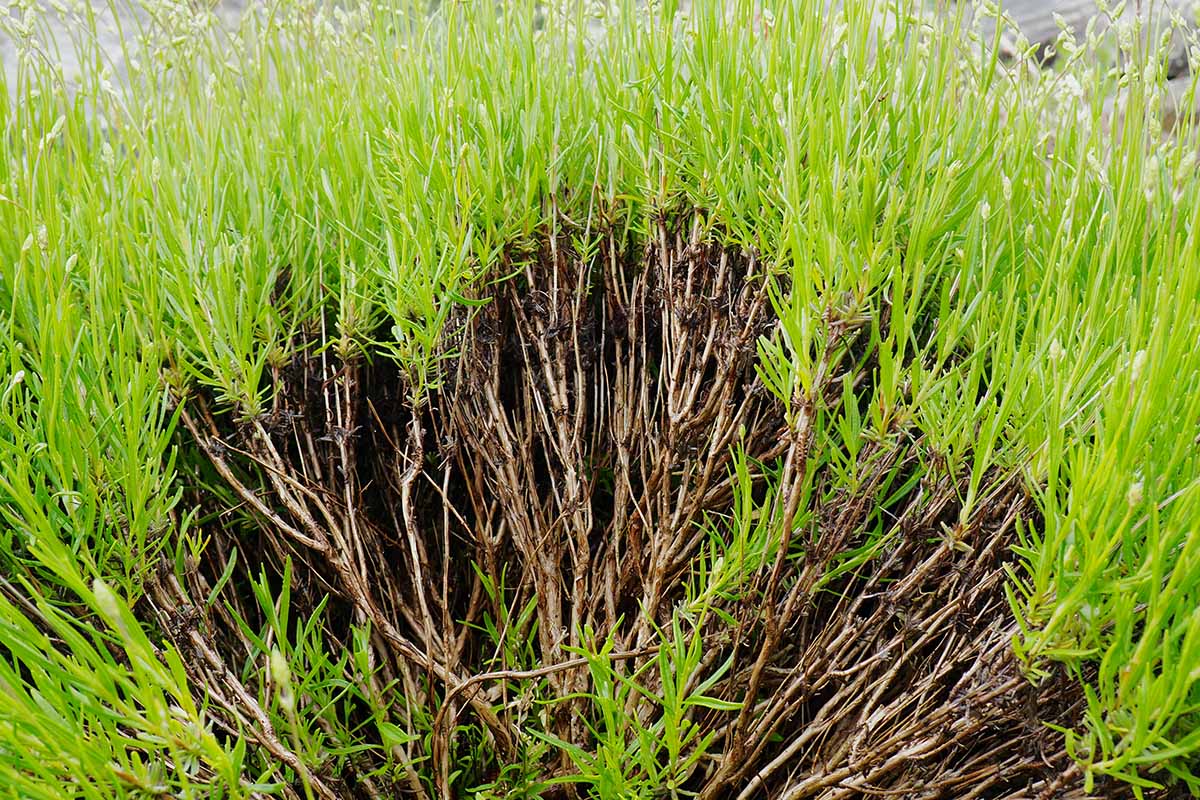Lavender plants are low maintenance perennials that are attractive and fragrant, but if they are not given the correct care, they have a tendency to grow leggy.
Make sure lavender is planted in low fertility soil and refrain from fertilizing as high fertility soils encourage lanky, messy growth. To control lanky growth and slow down woody growth, prune the lavender, ideally twice a year in the early spring and late summer.
If your lavender is already lanky or you’re seeking for advice on how to keep it from getting lanky, keep it neat, and encourage it to produce lots of flowers, keep reading.
Table of Contents
Plant Lavender in the Right Soil to Prevent Leggy Growth
The most blooms, oils, and healthiest plants are actually produced by lavenders in low-nutrient areas since they have acclimated to these conditions.
Lavender will develop a lanky, untidy appearance with plenty of foliage growth and fewer blooms if it is planted in nutrient-rich soils with loads of organic matter.
The same holds true if fertilizer is added to the soil around lavender plants, hence fertilizer shouldn’t be applied directly to lavender plants. Lavender frequently turns yellow under very fruitful conditions, a symptom of too much nitrogen in the soil.
You will need to temporarily remove the lavender and amend the soil with course sand or grit in order to diminish the overall fertility of the soil to prevent leggy lavenders caused by rich soils.
This will assist in simulating the soil characteristics of the Mediterranean region, where lavenders normally flourish.
Avoid using a spade or shovel for this task since it is very easy to unintentionally cut through the roots. Instead, carefully fork the lavender out of the ground to prevent damaging the roots.
For large lavender kinds, add course builders sand or grit to a depth of about 18 inches, and well mix it up so that there is roughly 30% sand or gravel to 70% soil. You can afford to be liberal with the sand since too much sand or gravel is always preferable to too much fertile soil.
To prevent transplant shock, replant the lavender in the modified location and give it plenty of water. Read my article on the safest ways to move lavenders and prevent shock for additional details.
Sand or gravel will also produce the ideal, quickly draining soil conditions lavenders require to thrive.
This will boost the lavender’s blossoms, oil production, and aroma in addition to helping to prevent leggy lavender. English lavenders that receive proper care can live for up to 15 years.
Prune Lavender Twice Per Year to Stop Leggy Foliage
The first pruning of the year should take place in the spring, right as the plant’s base is beginning to sprout fresh green leaves.
Lavender pruning is really easy; all you have to do is cut off the top third of the green growth and sculpt the plant into a lovely even round, mound form.
The lavender should be kept in a mound form to reduce legginess and to help it withstand the impacts of the weather.
Cutting back into or close to the plant’s woody base is something you should avoid doing because growth typically does not regenerate from this area of the plant.
(Reading my post on controlling woody growth at the lavender plant’s base.)
Make sure to just remove the top third of the green growth because pruning lavender too severely frequently results in leggy lavender.
If you don’t prune your lavender in the spring to achieve a mound shape, it will be more prone to splitting and appear untidy and lanky.
Similar to how routine pollarding prolongs the life of a tree, pruning the lavender will decrease the growth of the woody base and increase its lifespan.
Here is a fantastic YouTube video that demonstrates how to prune lavender in the spring for a tidy, healthy, non-leggy appearance.
Prune and Tidy Lavender in the Summer
It is a good idea to softly prune lavender plants in the summer to minimize lanky development and get them ready for the coming winter.
If you did a good job of pruning in the spring, all that will be needed at the end of the summer is a light pruning/harvest. Avoid pruning the lavender too severely in the fall because there won’t be much time for it to recover from injuries and get ready for winter.
If you want to harvest flowers for fragrance, potpourri, or other ornamental uses throughout the season, the best time to do it is in the mornings when the oil is most concentrated. You may also simply trim short any long flower stems that have fading blooms (before the seed sets).
If you maintain a regular pruning routine each year, you can avoid having lanky or untidy lavender plants and instead have robust, long-lasting plants with many of flowers.
Key Takeaways:
- Avoid fertilizer use and plant lavender in low- to medium-fertility soil if you want to keep it from growing leggy.
- Lavender grows best in low- to medium-fertility soil, so you might need to add sand or grit to the soil to improve its structure and reduce its nutrient content if you want to keep it from getting leggy.
- Lavenders will be nice and tidy if they are pruned twice a year. Early in the spring, while the lavender’s base is beginning to sprout green leaves, is when the initial pruning should be done. To neaten the appearance and control any lanky growth, the second prune should be a lighter trim in the late summer. Additionally, this will increase blossom growth and prolong the life of the lavender plant.
FAQ
Why is my lavender turning woody?
Although lavender plants can live up to 20 years, after six to eight years, they frequently become woody. The main contributing factors to this issue are heavy soil and frequent summer irrigation. Allow plants to dry out in the summer before watering to promote longer life. Plant on a slope or modify the soil in the planting area if your soil is clay.
Why is my lavender scraggly?
Lavender plants can get overgrown and scraggly and may not bloom as frequently if they are not pruned. Therefore, develop the habit of routinely trimming your plant if you want to prevent this from happening.
How do I make my lavender bush bushy?
To encourage new growth, prune lavender back by a third to a half of its height. Lower stems of older plants develop a woody texture. Avoid cutting into the woody base and locate the woody portion of the stem. Go up about 2 inches to make the cut. Trim faded flower stalks back throughout the blooming period to promote recurrent blooming.



